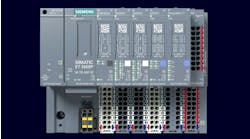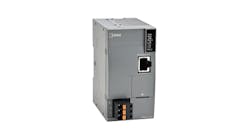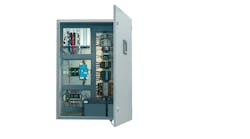A Control Design reader writes: My question arises due to machines we received at our manufacturing plant in Arizona from an OEM in Asia. All of the PLC 24 Vdc digital input modules were NPN (sourcing 24 V dc) and our plant’s standard is PNP inputs (sinking 24 Vdc inputs). These signal levels (sourcing input module with sinking sensor vs. sinking input with sourcing sensor) seem like they will double the number of input modules and sensor spare parts we stock. We need to make some decisions on NPN vs. PNP transistors.
I’ve been asked to clearly document the electrical standards related to NPN vs. PNP and other I/O signal levels, in a machine standard. The question is what signal level sensors and I/O modules should I standardize on—NPN or PNP—in our U.S. plant, and why do the signal levels seem to be different (negative vs. positive type) on the equipment from Asia? Also, do I have the terminology correct, such as a sourcing sensor connects to a sinking input is a PNP configuration?
In the standards, I also wanted to document when to use a pull-up resistor. Is that a way to convert an NPN to a PNP signal level, or am I confusing that with an open collector input? Or is a better solution to install an opto-isolator or just replace the I/O module and sensors? Finally, are there other signal voltage levels I should document such as 5 Vdc and 120 Vac that would have NPN vs. PNP or other signal issues?
PNP sensors for the U.S. plant
Thomas Kolleck, sensor technology engineer, Turck: For the U.S. market, standardizing on PNP sensors would be the better option as they are more popular and easier to find than their NPN counterparts. PNP sensors are also easier to understand and troubleshoot by technicians, since the sensor will give a high-level voltage signal when the output is active. However, it almost always comes down to personal preference and which sensors are easier for you to source.
Historically, Asia standardized early on NPN sensors, while in Europe the popular choice is PNP.
Generally speaking, the sourcing sensor and sinking input terminology is correct. However, some manufacturers will label an input for the corresponding output device, rather than the actual function of the input itself. In the above example you would use a PNP sensor to connect to a PNP input, even though it is technically a sinking (NPN) input.
An external pull-up resistor could be used to convert an NPN sensor to work with a sinking input. However, care must be taken, as this will invert the logic of the sensor. When the output of the NPN sensor is off, the sinking input will be pulled high. Alternatively, a pull-down resistor can be used to convert from PNP to NPN.
For dc sensors, in addition to NPN or PNP, you might also come across two-wire sensors, which could be wired into a PNP or NPN input in either configuration. However, you should always consider the off-state operational current of the sensor in those cases, as it can sometimes cause problems depending on the voltagelevel requirements of the input.
[sidebar id=2]




